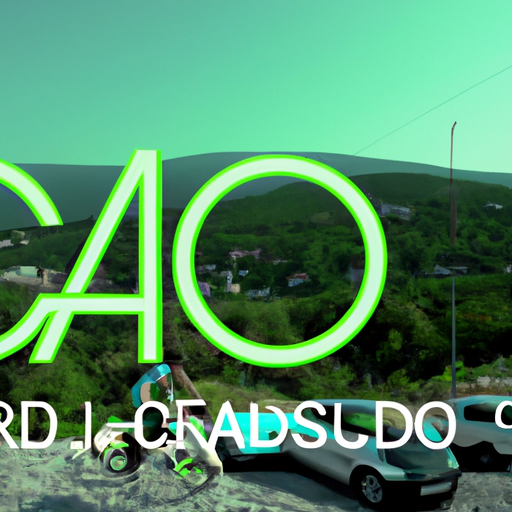
The Evolution of Electric Vehicles in Croatia
Electric vehicles (EVs) have come a long way in the past decade, and Croatia has been at the forefront of promoting green mobility. Over the past 10 years, the country has made significant strides in the adoption and development of electric vehicles, contributing to a cleaner and more sustainable future.
In the early days, electric vehicles were a novelty in Croatia. They were seen as a niche market, with limited options and high prices. However, as awareness about the environmental impact of traditional vehicles grew, so did the demand for electric alternatives. The government recognized this shift and began implementing policies to encourage the use of electric vehicles.
One of the key initiatives introduced by the Croatian government was the implementation of a comprehensive charging infrastructure. Charging stations were installed across the country, making it easier for EV owners to recharge their vehicles. This move was crucial in alleviating range anxiety, a common concern among potential EV buyers. With a reliable charging network in place, more people felt confident in making the switch to electric.
Another important factor in the evolution of electric vehicles in Croatia was the introduction of incentives and subsidies. The government offered financial incentives to individuals and businesses who purchased electric vehicles, making them more affordable and accessible. These incentives, coupled with the lower operating costs of EVs compared to traditional vehicles, made electric mobility an attractive option for many.
As the demand for electric vehicles increased, so did the variety of models available in the Croatian market. Initially, there were only a handful of options, but today, consumers can choose from a wide range of electric vehicles, including sedans, SUVs, and even electric motorcycles. This increased variety has further fueled the adoption of electric vehicles in the country.
In addition to the efforts made by the government and automakers, the public’s perception of electric vehicles has also evolved over the years. Initially, there were concerns about the limited range and charging infrastructure. However, as more people began driving electric vehicles and experiencing their benefits firsthand, these concerns started to fade away. Today, electric vehicles are seen as a practical and environmentally friendly alternative to traditional vehicles.
Looking ahead, the future of electric vehicles in Croatia looks promising. The government has set ambitious targets for the adoption of electric vehicles, aiming to have 200,000 EVs on the roads by 2030. To achieve this goal, the government plans to further expand the charging infrastructure and introduce additional incentives for EV buyers.
The evolution of electric vehicles in Croatia over the past 10 years is a testament to the country’s commitment to promoting green mobility. From the early days of limited options and high prices to the current wide range of models and affordable prices, Croatia has made significant progress in making electric vehicles a viable and attractive option for its citizens. With continued support from the government and growing public awareness, the future of electric mobility in Croatia looks bright.
Sustainable Transportation Initiatives in Croatia: A Decade of Progress

Croatia, a country known for its stunning coastline and picturesque landscapes, has made significant strides in promoting sustainable transportation over the past decade. With a focus on reducing carbon emissions and improving the overall quality of life for its citizens, Croatia has implemented a range of initiatives that have transformed the way people travel within the country.
One of the key initiatives that has contributed to the success of sustainable transportation in Croatia is the development of an extensive network of cycling paths. Over the past ten years, the government has invested heavily in creating safe and well-maintained cycling routes that connect major cities and tourist destinations. This has not only encouraged more people to take up cycling as a means of transportation but has also boosted tourism, as visitors can now explore the country’s natural beauty on two wheels.
In addition to cycling paths, Croatia has also made significant progress in promoting electric vehicles. The government has introduced various incentives, such as tax breaks and subsidies, to encourage the purchase and use of electric cars. As a result, the number of electric vehicles on the roads has steadily increased, reducing the country’s dependence on fossil fuels and improving air quality. Furthermore, the government has invested in the development of a robust charging infrastructure, making it easier for electric vehicle owners to recharge their vehicles while on the go.
Another notable sustainable transportation initiative in Croatia is the introduction of car-sharing services. These services allow individuals to rent a car for short periods, reducing the need for private car ownership and promoting a more efficient use of vehicles. Car-sharing has gained popularity in major cities, where residents can easily access a car when needed without the hassle of owning one. This not only reduces traffic congestion but also contributes to a greener environment by reducing the number of cars on the road.
Furthermore, Croatia has implemented a comprehensive public transportation system that offers reliable and affordable options for commuters. The country has invested in modernizing its bus and train fleets, making them more comfortable and environmentally friendly. Additionally, the government has introduced integrated ticketing systems, allowing passengers to seamlessly transfer between different modes of public transportation. This has made it easier for people to choose public transportation over private cars, reducing traffic congestion and carbon emissions.
To further encourage sustainable transportation, Croatia has also prioritized the development of pedestrian-friendly infrastructure. Sidewalks and pedestrian crossings have been improved, making it safer and more convenient for people to walk or use other non-motorized modes of transportation. This has not only improved the overall quality of life for citizens but has also made cities more attractive to tourists.
In conclusion, Croatia has made significant progress in promoting sustainable transportation over the past decade. Through the development of cycling paths, the promotion of electric vehicles, the introduction of car-sharing services, the improvement of public transportation, and the prioritization of pedestrian-friendly infrastructure, the country has transformed the way people travel within its borders. These initiatives have not only reduced carbon emissions and improved air quality but have also contributed to a greener and more livable environment for all. As Croatia looks towards the future, it is clear that sustainable transportation will continue to play a crucial role in shaping the country’s transportation landscape.
Promoting Cycling Culture in Croatia: A Green Mobility Success Story
Croatia, a country known for its stunning coastline and picturesque landscapes, has been making great strides in promoting green mobility over the past decade. With a focus on promoting cycling culture, Croatia has become a success story in the realm of sustainable transportation.
One of the key factors contributing to the success of green mobility in Croatia is the government’s commitment to investing in cycling infrastructure. Over the past 10 years, the government has allocated significant funds to the development of cycling paths and lanes, making it easier and safer for people to choose cycling as their preferred mode of transportation. This investment has not only improved the overall cycling experience but has also encouraged more people to take up cycling as a means of commuting.
In addition to infrastructure development, Croatia has also implemented various initiatives to promote cycling culture. One such initiative is the introduction of bike-sharing programs in major cities. These programs allow residents and tourists alike to rent bicycles for short periods, making it convenient for them to explore the city or commute to work without relying on cars or public transportation. The success of these bike-sharing programs can be seen in the increasing number of users and the positive feedback received from the community.
Furthermore, Croatia has been actively organizing cycling events and campaigns to raise awareness about the benefits of green mobility. These events range from local community rides to national cycling festivals, attracting participants of all ages and skill levels. By showcasing the joy and health benefits of cycling, these events have played a crucial role in changing people’s perceptions and attitudes towards cycling as a viable mode of transportation.
Another significant aspect of Croatia’s success in promoting green mobility is the integration of cycling into urban planning. Many cities have adopted a bicycle-friendly approach, with dedicated cycling lanes and parking facilities incorporated into their urban design. This integration not only encourages more people to cycle but also helps reduce traffic congestion and air pollution, making cities more livable and sustainable.
Moreover, Croatia has recognized the importance of education and awareness in promoting green mobility. Schools and universities have implemented cycling education programs, teaching students about road safety, bike maintenance, and the environmental benefits of cycling. By instilling these values at a young age, Croatia is nurturing a future generation that understands and appreciates the importance of sustainable transportation.
The success of green mobility in Croatia can also be attributed to the growing popularity of electric bicycles. With advancements in technology, electric bicycles have become more affordable and accessible to the general public. These bikes provide an alternative to traditional bicycles, allowing people to cover longer distances or tackle hilly terrains with ease. The rise in electric bicycle usage has further contributed to reducing carbon emissions and promoting a greener way of commuting.
In conclusion, Croatia’s commitment to promoting green mobility, particularly through the promotion of cycling culture, has yielded remarkable results over the past decade. Through investments in infrastructure, initiatives like bike-sharing programs, cycling events, and education, Croatia has successfully transformed its transportation landscape. As the country continues to prioritize sustainable transportation, it serves as an inspiration and a success story for other nations looking to promote green mobility.


